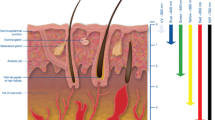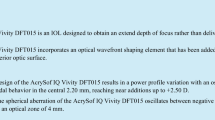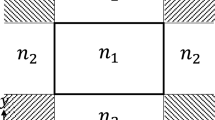Abstract
A formula of the third-order aberration based on the primary aberration expansion for an off-axial optical system is investigated. The point eikonal analysis and the coordinate system using the surface normal vector lead to a simple wavefront-based expression. Three-ray system employing the central, the principal and an arbitrary ray is examined for the derivation. The rays are forced to reach from the last surface to a virtual image point. Therefore, the contradiction of the optical path lengths brings the wavefront aberration. The extracted third-order aberrations are not strictly the same expressions as the conventional formula but show clearly the features of the five kinds of the primary aberrations along with the term originated by the off-axial layout. The relation between the second-order term and the expanded gaussian matrix for paraxial ray tracing and a term related to field curvature are discussed for off-axial systems.



Similar content being viewed by others
References
Herzberger, M.: Modern Geometrical Optics. Interscience Publishers, New York (1958)
Araki, K.: Analysis of off-axial optical systems (1). Opt. Rev. 7, 221 (2000)
Araki, K.: Paraxial and aberration analysis of off-axial optical systems. Opt. Rev. 12, 219 (2005)
Stone, B.D., Forbes, G.W.: Foundations of first-order layout for asymmetric systems: an application of Hamilton’s methods. J. Opt. Soc. Am. A 9, 96 (1992)
Stone, B.D., Forbes, G.W.: Characterization of first-order optical properties for asymmetric systems. J. Opt. Soc. Am. A 9, 478 (1992)
Araki, K.: Analysis of off-axial optical systems (2). Opt. Rev. 7, 326 (2000)
Wakazono, T., Yatagai, T., Araki, K.: Third-order aberration analysis of an off-axial optical system. Opt. Rev. 23, 61–76 (2016)
Buchdarl, H.A.: System without symmetries: foundations of a theory of Lagrangian aberration coefficients. J. Opt. Soc. Am. 63, 1314 (1972)
Stone, B.D., Forbes, G.W.: Foundations of second-order layout for asymmetric systems. J. Opt. Soc. Am. A 9, 2067 (1992)
Oleszko, M., Hamback, R., Gross, H.: Decomposition of the total wave aberration in generalized optical systems. J. Opt. Soc. Am. A 34, 1856 (2017)
Fuerschback, K., Rolland, J.P., Thompson, K.P.: Theory of aberration fields for general optical systems with freeform surfaces. Opt. Express 22, 26585 (2014)
Thompson, K.: Description of the third-order optical aberrations of near-circular pupil optical systems without symmetry. J. Opt. Soc. Am. A 22, 1389 (2005)
Matsui, Y.: Lens design method (in Japanese). Kyoritsu Publication, Tokyo (1972)
Born, M., Wolf, E.: Principles of Optics, 6th edn. Cambridge University press (1980)
Author information
Authors and Affiliations
Corresponding author
Additional information
Publisher's Note
Springer Nature remains neutral with regard to jurisdictional claims in published maps and institutional affiliations.
Appendix
Appendix
We assume that the coordinate system is adjusted so that the central image height vector only has y component, i.e., y = (y0,0).
Figure 4 shows the ray height vector and the central ray directions with an angle q to the normal vector of the surface. Using the matrix J listed as formula (8), the relationship between Y, h and h′ in Ref. [3] is expressed as
where
Coordinate system and relationship between h, h′ in Ref. [3] and Y
The formula (25) is transformed to an expression with respect to h and a in Ref. [3] as follows:
where the paraxial angle vector a is defined as:
Finally, the formula shown as the formula (13) in Ref. [3] is derived with (36) and (38):
where N* is defined as:
Rights and permissions
About this article
Cite this article
Saito, K. Derivation of conventional formula of the third-order aberration for off-axial optical system. Opt Rev 26, 406–410 (2019). https://doi.org/10.1007/s10043-019-00516-4
Received:
Accepted:
Published:
Issue Date:
DOI: https://doi.org/10.1007/s10043-019-00516-4





